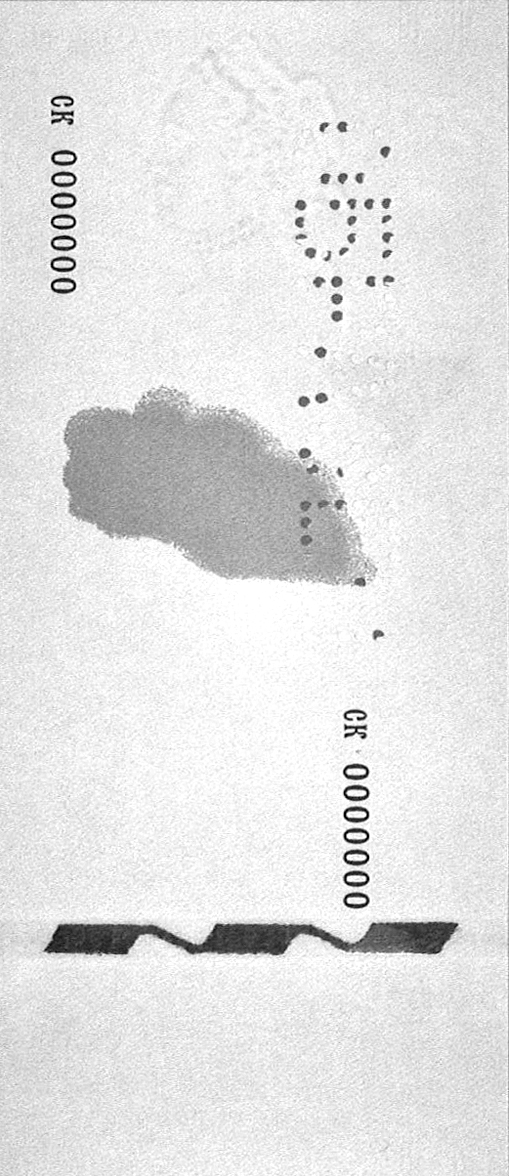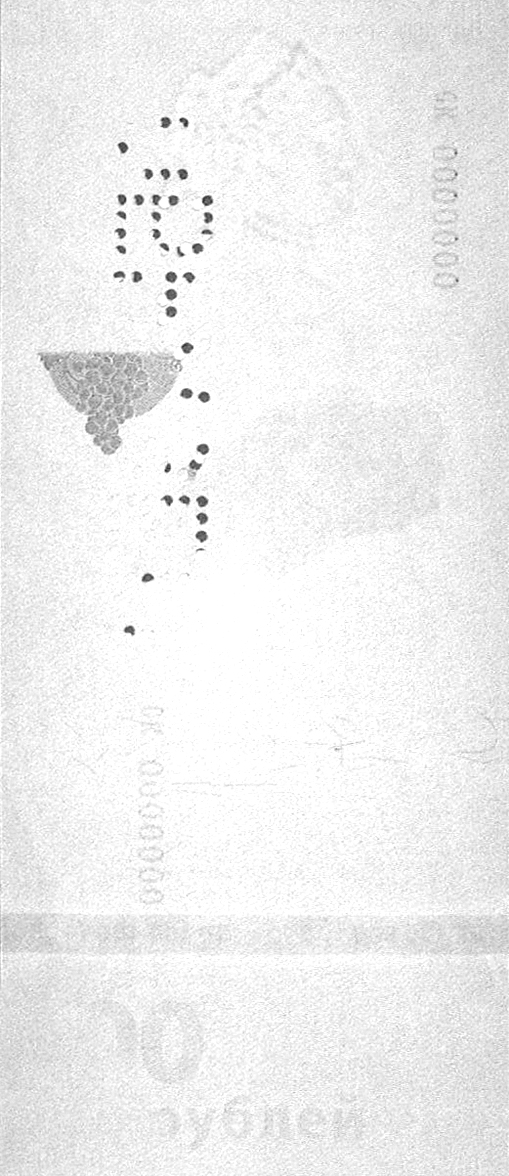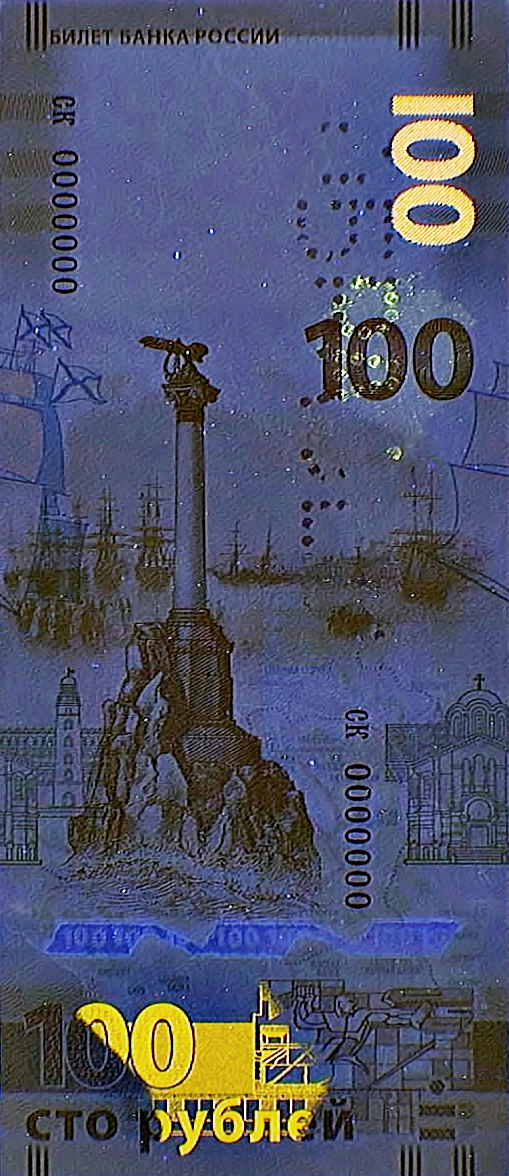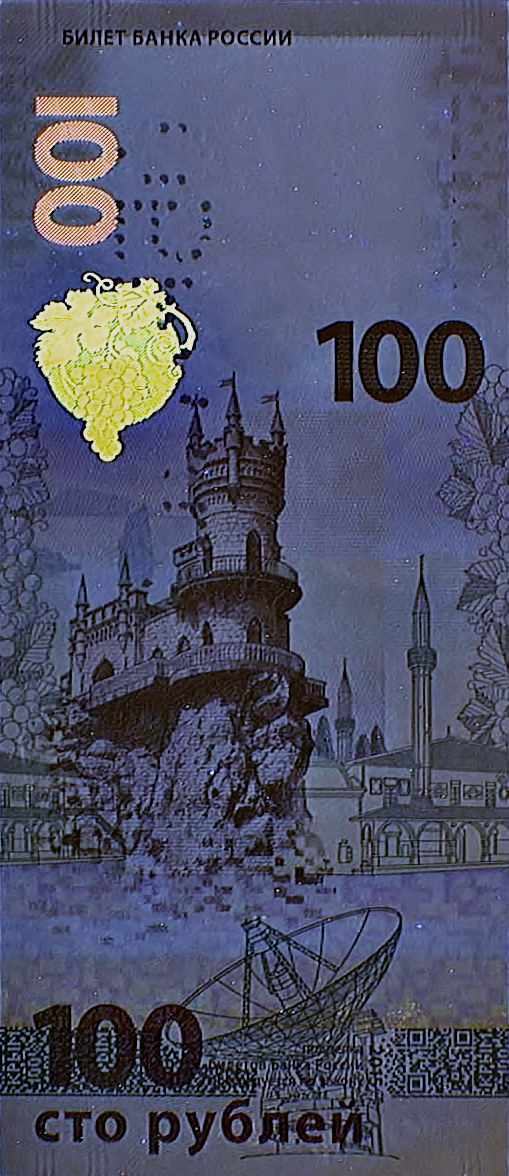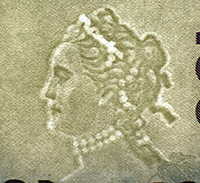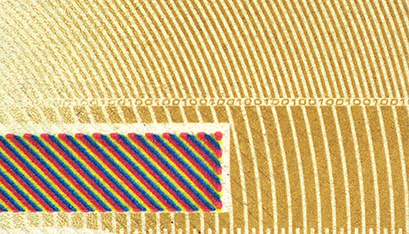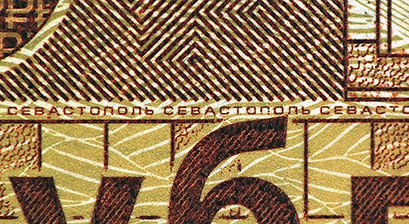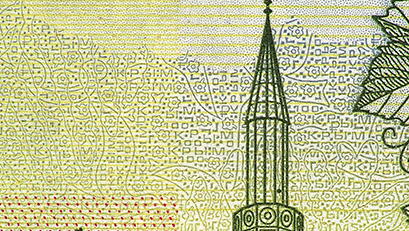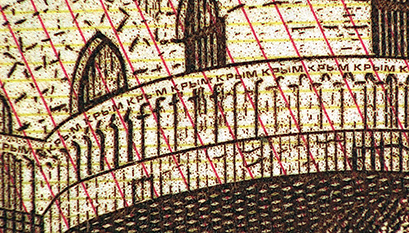The 100-ruble Bank of Russia commemorative note of 2015
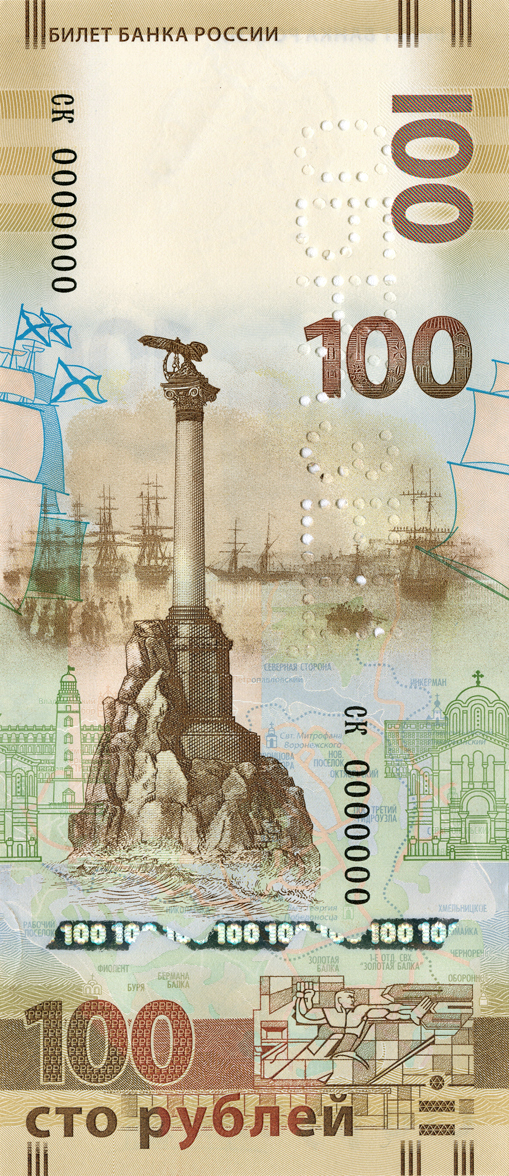
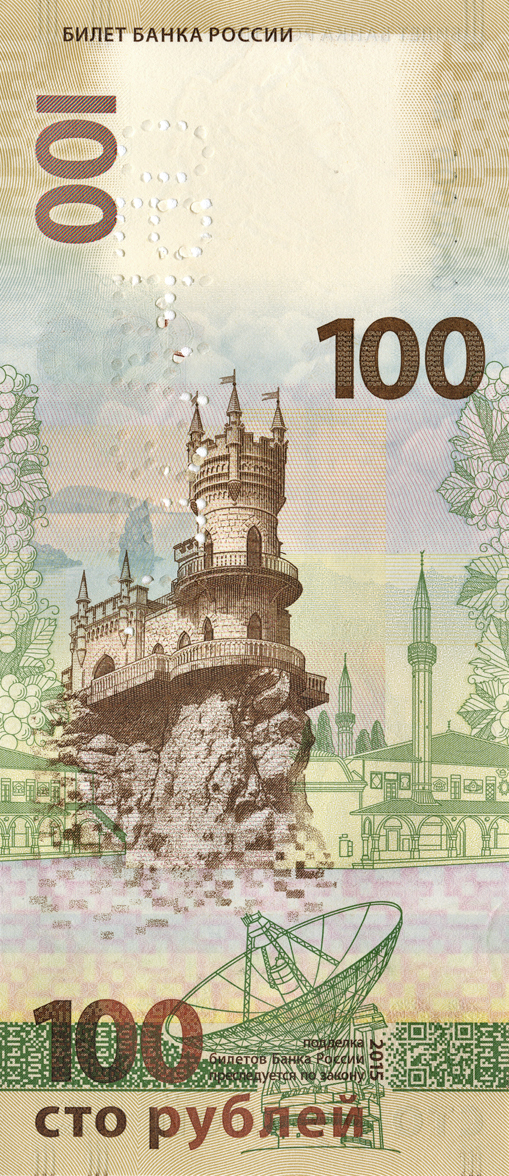
The banknote is printed on light-yellow colored cotton paper. One side of the note is devoted to Sevastopol, the other one — to Crimea. А wide security thread is embedded into the paper. It comes out on the surface on the Sevastopol side of the banknote in the figure shaped window. Multitone combined watermark is located on the unprinted area in the upper part of the banknote.
Ornamental designs run vertically along the banknote.
The Sevastopol side of the note features the Monument to the Sunken Ships in the Sevastopol bay and the fragment of the painting by I.K. Aivazovsky „Russian squadron on the Sevastopol roads”.
The Crimea side of the note features the decorative castle Swallow’s Nest.
In the lower part of the Sevastopol side of the banknote in the green stripe there is a QR-code linking to the Bank of Russia webpage containing historical information relating to the commemorative banknote.
The predominant color of the note is olive green.
Security features

When held up to the light the watermark is visible on the unprinted area in the upper part of the banknote. The multitone combined watermark (the portrait of Empress Catherine the Great) has gradual transitions from light to dark areas and elements which are lighter than the surrounding paper.
The security thread

The security thread

The positive microtext located to the left and to the right in the upper part of the banknote on the edges of the graphic elements shows the numeral „100” printed repeatedly in a line.
The positive microtext located to the left and to the right in the upper part of the banknote on the edges of the graphic elements shows the numeral „100” printed repeatedly in a line.
The positive microtext located to the left and to the right in the upper part of the banknote on the edges of the graphic elements shows the numeral „100” printed repeatedly in a line.
The positive microtext located to the left and to the right in the upper part of the banknote on the edges of the graphic elements shows the numeral „100” printed repeatedly in a line.
The positive microtext located below the image of the Memorial to the Heroic Defense of Sevastopol

The part of the background image consists of numerous fine graphic elements.
The positive microtext located on the image of the castle Swallow’s Nest along the top edge of the balcony of the first floor consists of the word „КРЫМ” (Crimea) printed repeatedly.

Repeated value numerals „100” are visible on fragments of the security thread which comes out on the surface on the Sevastopol side of the banknote in the figure shaped window. When the banknote is tilted one can view individual movements of characters.


When the banknote is viewed at an acute angle, the ruble symbol becomes visible on the decorative stripe. The ruble symbol becomes either light on a dark background or dark on a light background depending on the orientation of the banknote.
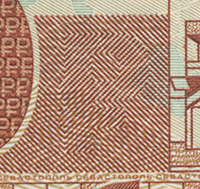
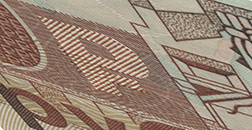
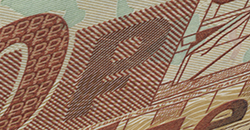
When the banknote is tilted monotone face value characters become multicolour. When the banknote is rotated through 180º each character changes its colour.
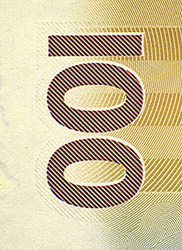


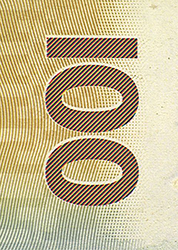



When the banknote is tilted under UV light monotone face value characters become multicolour. When the banknote is rotated through 180º each character changes its colour.
_1.jpg)
_2.jpg)
_3.jpg)
_4.jpg)
_5.jpg)
_6.jpg)

Text „БИЛЕТ БАНКА РОССИИ” (THE NOTE OF THE BANK OF RUSSIA), mark for visually impaired people, face value in numerals, text „СТО РУБЛЕЙ” (ONE HUNDRED RUBLES) have a raised relief well felt by touch.

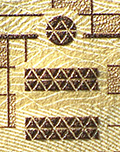
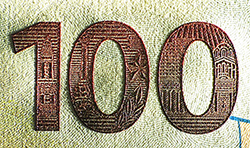

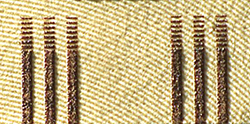
Text „БИЛЕТ БАНКА РОССИИ” (THE NOTE OF THE BANK OF RUSSIA), mark for visually impaired people, face value in numerals, text „СТО РУБЛЕЙ” (ONE HUNDRED RUBLES) have a raised relief well felt by touch.





Text „БИЛЕТ БАНКА РОССИИ” (THE NOTE OF THE BANK OF RUSSIA), mark for visually impaired people, face value in numerals, text „СТО РУБЛЕЙ” (ONE HUNDRED RUBLES) have a raised relief well felt by touch.





Text „БИЛЕТ БАНКА РОССИИ” (THE NOTE OF THE BANK OF RUSSIA), mark for visually impaired people, face value in numerals, text „СТО РУБЛЕЙ” (ONE HUNDRED RUBLES) have a raised relief well felt by touch.





Text „БИЛЕТ БАНКА РОССИИ” (THE NOTE OF THE BANK OF RUSSIA), mark for visually impaired people, face value in numerals, text „СТО РУБЛЕЙ” (ONE HUNDRED RUBLES) have a raised relief well felt by touch.





